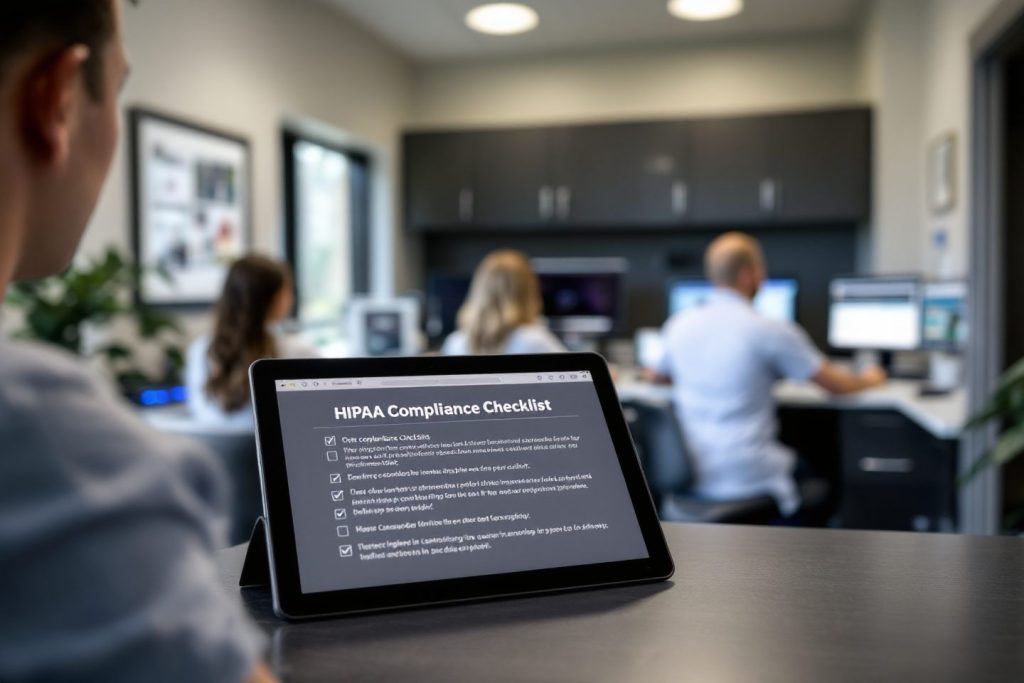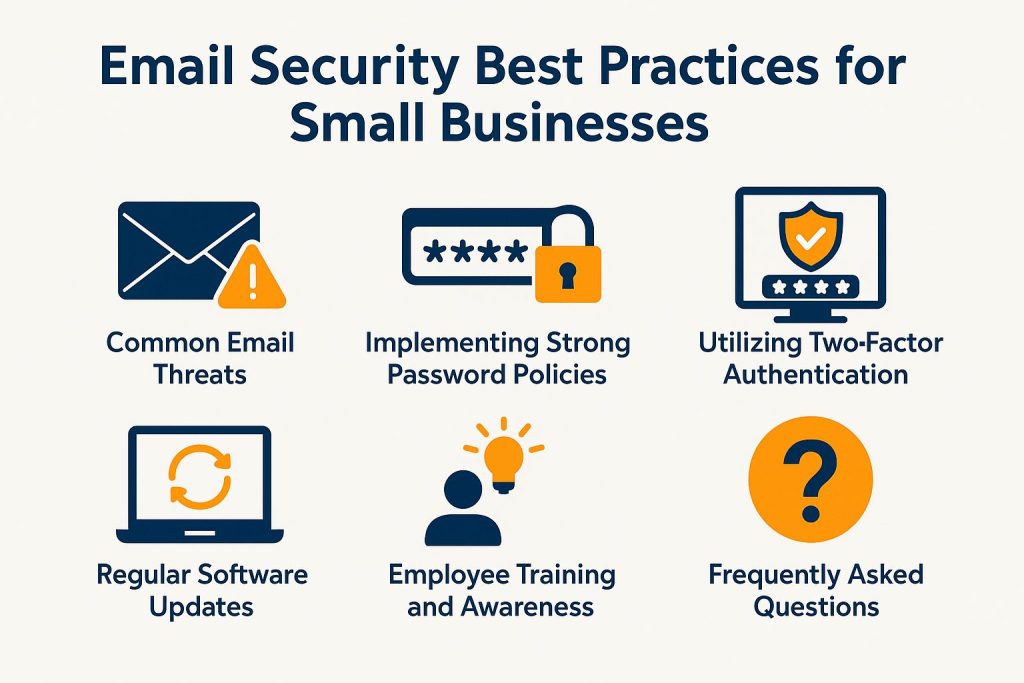IT Security Solutions for Healthcare Practices
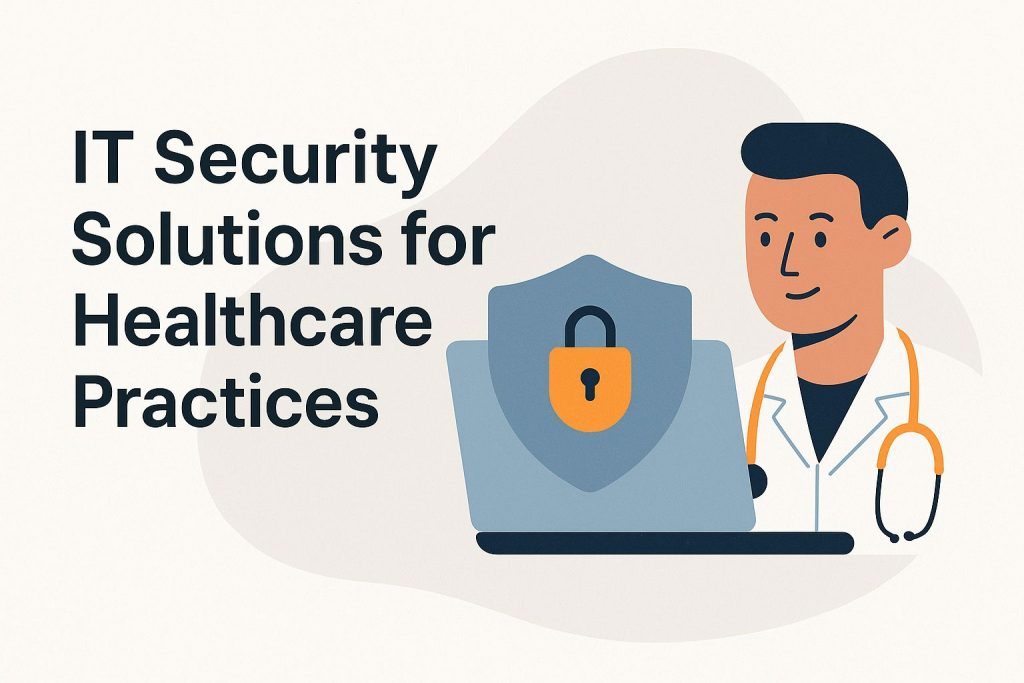
In 2023, ransomware attacks hit major healthcare providers hard. They exposed millions of patient records. The attacks cost billions. The U.S. Department of Health and Human Services reported this. Cyber threats grow. Healthcare practices now face big risks. These risks affect data safety and daily operations. This article looks at key topics. It covers common weaknesses, HIPAA rules, network protections, encryption methods, and response plans. These tools strengthen defenses and save lives.
Common Threats and Vulnerabilities
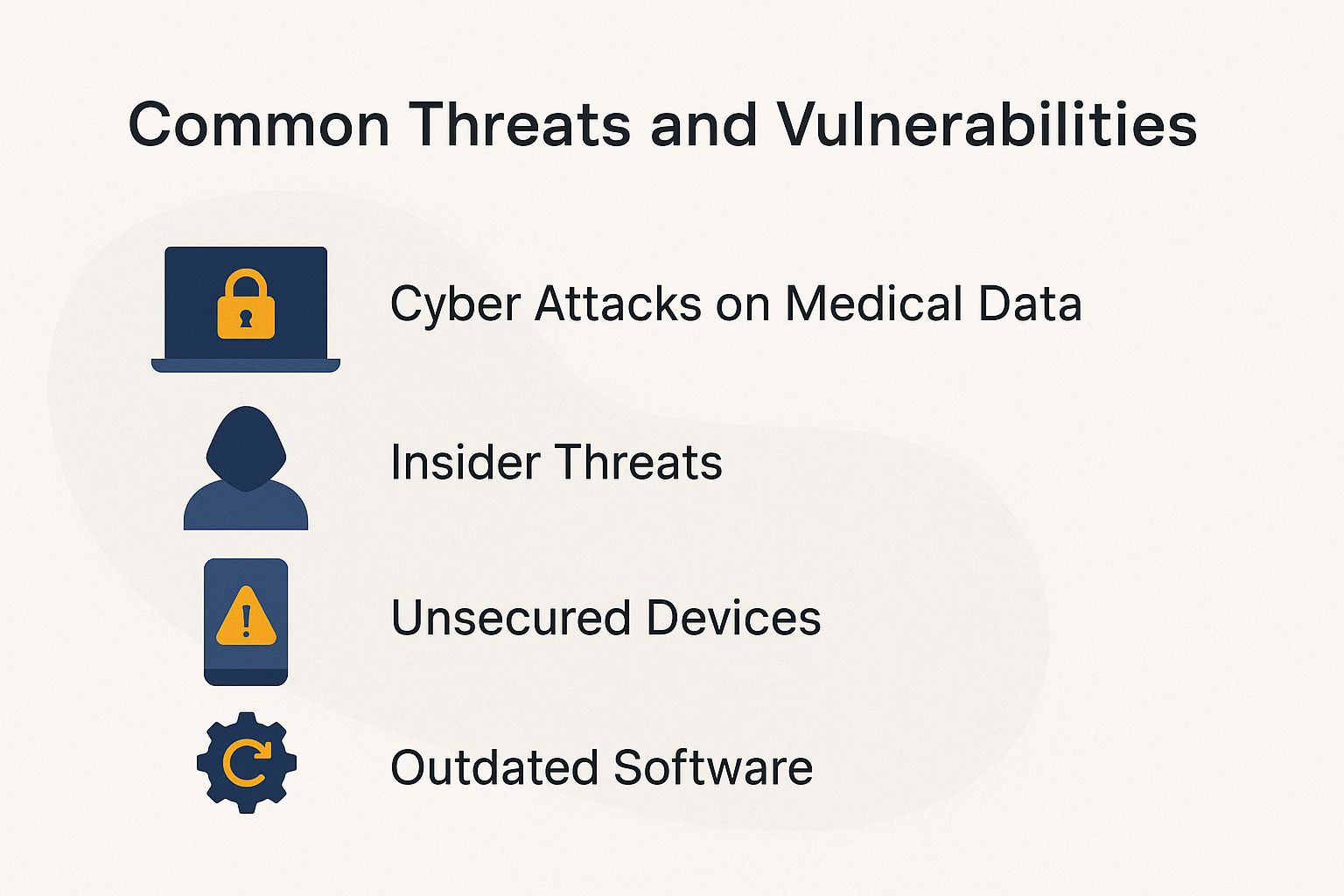
Cybercriminals target healthcare systems often. Phishing causes 36% of breaches. Verizon’s 2023 report shows this. Once aware of these vulnerabilities, engaging professional cybersecurity services becomes a crucial next step in protection.
Cyber Attacks on Medical Data
Ransomware hits hospitals. Similar to the 2021 Colonial Pipeline attack, it locks electronic health records (EHRs) and halts operations. You need strong plans to recover fast. The 2023 Change Healthcare attack shows the risk. It affected one-third of U.S. patients. It stopped prescription handling and billing.
Breaches cost an average of $10.1 million each, according to the Ponemon Institute.
Fight ransomware threats. Use endpoint detection tools. Try CrowdStrike Falcon. It scans systems every hour. It blocks threats quickly.
Handle phishing risks. The 2023 MGM Resorts breach shows why. Train staff with tools like KnowBe4 simulations. Studies show these programs work. They cut clicks on phishing links by up to 50%.
DDoS attacks hit telemedicine. They disrupted U.S. clinics in 2022. Use protections like Cloudflare. It handles extra traffic and stops the attacks.
Stop SQL injection in EHR portals. Follow OWASP guidelines. Run checks with tools like Nessus. Patch issues every quarter. This keeps defenses strong.
Regulatory Compliance Essentials
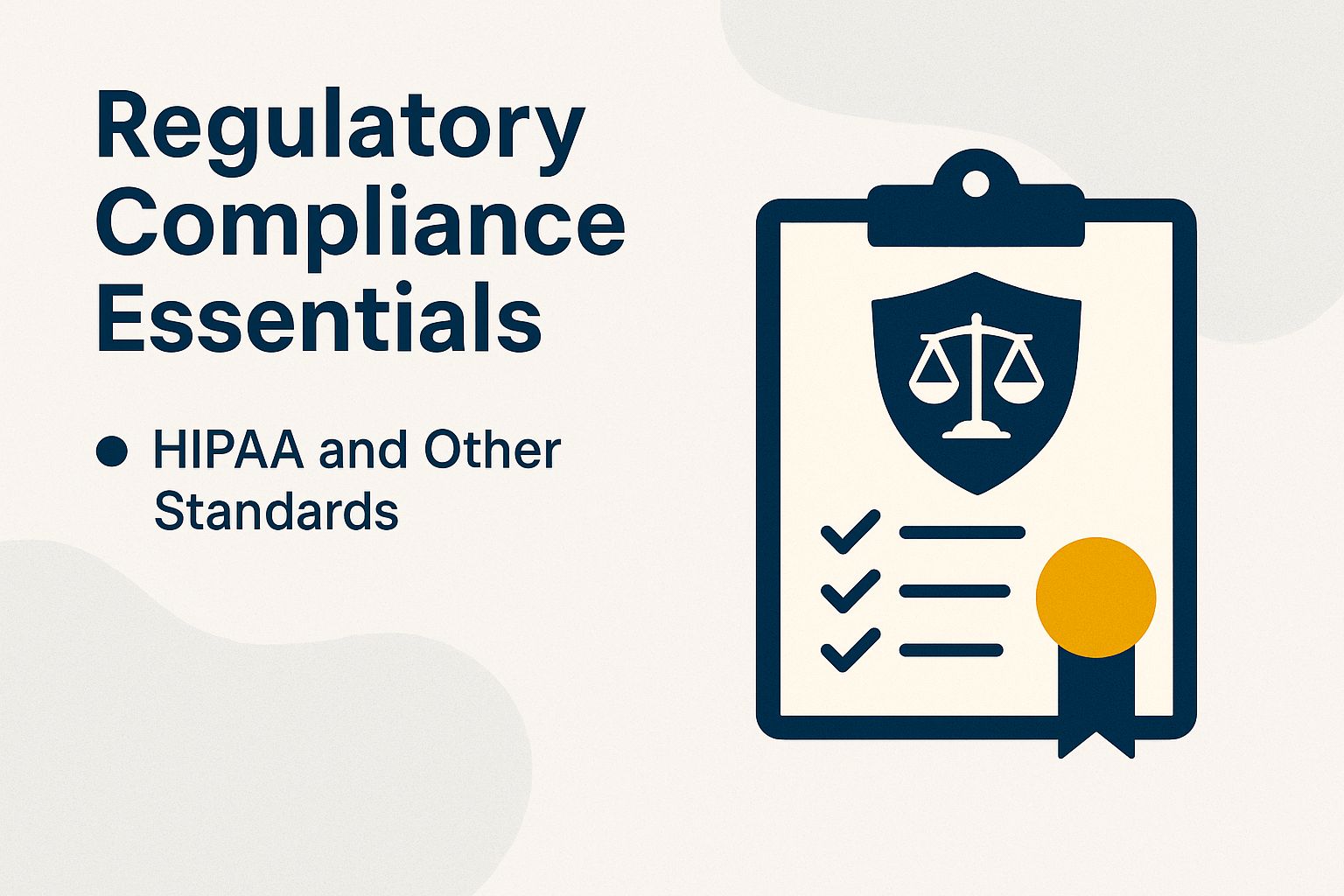
Break healthcare rules. You may face fines over $50,000 per violation. HIPAA enforces this, as explored in our guide on HIPAA-compliant IT solutions for Asheville dental practices. The U.S. Department of Health and Human Services does too.
HIPAA and Other Standards
HIPAA Security Rule demands safeguards. Protect electronic patient data (PHI). 2023 updates stress cybersecurity for telemedicine. The HITECH Act outlines this. Gain compliance. Focus on four main standards.
- HIPAA includes key parts. The Privacy Rule protects access to PHI. The Security Rule covers tech protections like encryption. The Breach Notification Rule requires reports within 60 days. Conduct annual risk checks with HITRUST.
- HITECH: It makes HIPAA stronger. It adds strict breach reporting. Example: The 2015 Anthem breach led to a $16 million fine.
- ISO 27001: This global standard builds info security systems (ISMS). It requires yearly audits. Costs run from $10,000 to $50,000.
- SOC 2: It checks trust in cloud EHRs, like Epic’s. Type 2 reports test controls over 6 to 12 months.
Use this simple checklist for compliance:
- Reviewing guidelines from the U.S. Department of Health and Human Services (HHS) at hhs.gov;
- Executing Business Associate Agreements (BAAs) with vendors;
- Conducting quarterly vulnerability scans;
- Delivering annual training to staff;
- Auditing access logs on a monthly basis.
Mayo Clinic got ISO 27001 in 2022. It cut their audit time by 30%.
Network and Access Security
Use firewalls and multi-factor authentication (MFA). They reduce unauthorized access risks by 99%. Microsoft’s 2023 Digital Defense Report outlines this.
Beyond basic measures, use three key network security methods. They strengthen protection: firewalls, virtual private networks (VPNs), and role-based access control (RBAC). Start with a network assessment. Use free Nmap scans to find vulnerabilities. This takes about one hour.
| Method | Tools/Examples | Key Benefits & Setup | Drawbacks & Use Case |
|---|---|---|---|
| Firewalls | Palo Alto Networks (next-gen) | It blocks threats in real time with cloud tools. Set it up in 2-3 hours. Benefits: Strong edge defense. Meets NIST SP 800-53 standards. | Involves an initial cost exceeding $5,000. Optimal for edge protection scenarios. |
| VPNs | Cisco AnyConnect | It uses AES-256 encryption for data traffic. Set it up in 1-2 hours. This enables secure remote access. It improves security for telehealth. | May introduce potential latency issues. Suited for distributed workforces. |
| RBAC | Okta (integrates MFA) | Restricts electronic health record (EHR) access to authorized physicians; role configuration accomplished in one hour. Mitigates risks of over-privileging. | Require regular audits. It supports zero-trust principles. The Cleveland Clinic used it in 2022 to prevent a breach. |
Total deployment time ranges from 4-6 hours. Compliance with NIST SP 800-53 controls is recommended. For real-world examples of these security measures in action, discover Asheville’s best IT support case studies from local clients with practical success stories.
Data Encryption and Protection
Encrypt EHR data at rest and in transit. Use AES-256 standards. This cuts data exposure risks by 85%. See the 2023 Verizon DBIR report.
Organizations should evaluate the following comparison when selecting an appropriate encryption tool:
| Tool Name | Price | Key Features | Best For | Pros/Cons |
|---|---|---|---|---|
| VeraCrypt | Free | On-device encryption, cross-platform | Local storage | Pros: Open-source, no cloud dependency; Cons: Manual setup |
| Boxcryptor | $48/user/yr | Cloud integration, file-level encryption | Cloud services | Pros: Easy Dropbox/OneDrive sync; Cons: Subscription cost |
| AWS KMS | $0.03/10,000 requests | Scalable key management, API access | Cloud apps | Pros: Highly scalable; Cons: AWS ecosystem lock-in |
| Microsoft Azure Key Vault | $0.03/10,000 ops | Compliance tools, secret management | Enterprise compliance | Pros: HIPAA-ready; Cons: Azure-specific |
| ViShield | $99/yr | HIPAA-specific tokenization, auditing | Healthcare PHI | Pros: Tailored for regs; Cons: Niche focus limits versatility |
Small clinics can use VeraCrypt. It offers easy on-site setup. The learning curve is low. It fits basic needs.
AWS KMS scales well in the cloud. It suits growing healthcare practices.
The recommended implementation steps are as follows:
- Choose the AES-256 algorithm;
- Deploy key management utilizing hardware security modules (HSMs);
- Incorporate HIPAA-compliant tokenization for protected health information (PHI).
Refer to NIST Federal Information Processing Standards (FIPS) 140-2 validation, as demonstrated in UnitedHealth’s defenses against the 2023 breach.
Incident Response and Training
Test incident response plans with tabletop exercises. This cuts breach downtime from weeks to hours. It can save millions of dollars. See IBM’s 2023 report.
The development of such a plan encompasses the following five steps:
- Build an IR team. Include IT, legal, and executives. Use the NIST 800-61 template for guidance.
- Set clear procedures. Contain breaches in one hour. Use SIEM tools like Splunk. Cost: $150 per user per month.
- Conduct quarterly training. Include phishing simulations with Proofpoint. This reduces click rates by up to 90%.
- Perform testing via penetration testing, engaging specialized firms like Bishop Fox (costs ranging from $10,000 to $50,000).
- Review incidents by maintaining comprehensive logs using the ELK Stack.
The implementation process takes 1-2 weeks. Organizations must avoid common errors. Do not neglect vendor-related risks.
Follow the SANS Institute’s incident response playbook. Johns Hopkins used it in their 2022 phishing incident. They restored operations in 48 hours.
Frequently Asked Questions
What are IT Security Solutions for Healthcare?
IT Security Solutions for Healthcare include various technologies and strategies. Sensitive patient data is protected carefully. Electronic health records (EHRs) are safeguarded against breaches. Additionally, network infrastructure is secured from cyber threats. Key tools are firewalls, encryption, access controls, and intrusion detection systems. These tools fit healthcare’s special rules. They help meet standards like HIPAA.
Why Do Healthcare Practices Need IT Security Solutions?
Healthcare practices manage sensitive personal information. This makes them top targets for attacks like ransomware and data breaches. IT Security Solutions protect patient privacy. They stop financial losses from downtime. They avoid legal penalties. Without them, practices may break rules and lose patient trust.
How Can IT Security Solutions Ensure HIPAA Compliance?
IT Security Solutions help with HIPAA compliance. Strong data encryption is used to protect information. Secure access is carefully managed to prevent breaches. Audits are logged to track protected health information (PHI). Practices run regular risk checks. They keep patient data confidential, intact, and available. HIPAA requires this.
What Common Cyber Threats Do IT Security Solutions Address?
IT Security Solutions target common threats. These include phishing, malware, and insider risks. They can harm medical records. Use antivirus software. Add multi-factor authentication. Train employees. These steps reduce risks. They spot issues in real time. They offer quick responses to limit damage.
How Should Healthcare Practices Implement IT Security Solutions?
Implement IT Security Solutions step by step. First, do a full security audit. Next, pick scalable tools like endpoint protection and cloud services. Then, connect them to EHR systems. Train staff on best practices. Monitor and update regularly. This keeps solutions ready for new threats and rules.
What Benefits Do IT Security Solutions Offer?
IT Security Solutions offer key benefits. They enhance data protection and reduce breach risks. By providing secure remote access, efficiency improves significantly. Avoiding fines and costly recovery saves money. Building patient trust is another key benefit. Ultimately, these solutions support smooth care in digital healthcare.
